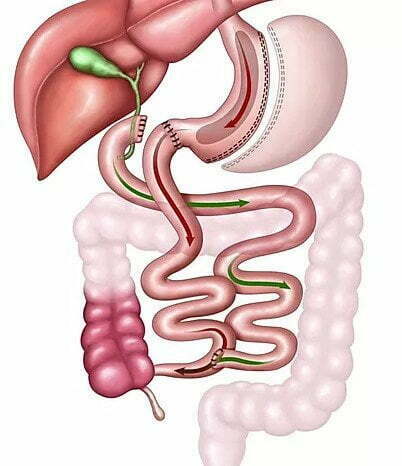- This operation combines a gastric sleeve with a very long intestinal bypass.
- Is often used for patients with a high BMI (>55) or with severe diabetes. Can be done as a “two step” operation for patients at higher BMIs.
- Not currently a common operation in the United States (only accounts for about 0.7% of bariatric operations) but the number has been slowly increasing.
- This is by far the most effective bariatric operation as patients will reliably lose around 80% of the extra weight they are carrying (40% of body weight) and keep it off. These patients also see a significant improvement in many of their weight related medical problems.

- This operation carries the highest risk of death and complications during the first 30 days after surgery.
- Patients can eat a larger amount of food after this operation as they don’t absorb the food due to the long intestinal bypass. Because of this significant malabsorption component, patients will usually have 5-6 watery stools a day in the early phase after surgery. Most patients will eventually (around a year after surgery) have 4-6 “normal” bowel movements a day.
- The likelihood of malnutrition and serious vitamin and mineral deficiencies is highest with this operation, so it is critical patients follow nutritional and supplement recommendations for the rest of their life. While regular follow up is important for any bariatric operation, it is especially important for duodenal switch patients to prevent life threatening problems from developing.
